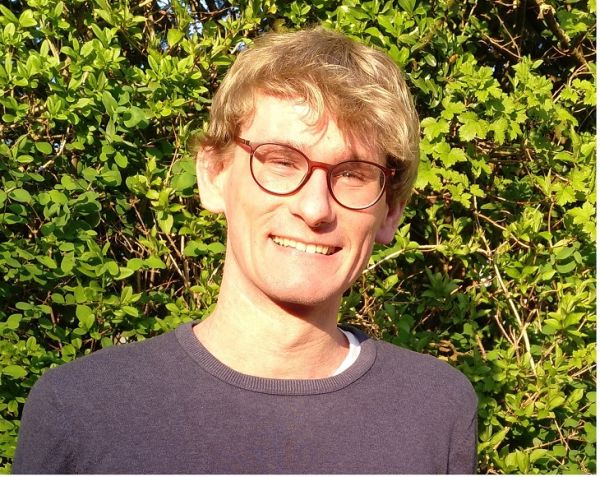Transcription Factors
Transcription factors are proteins that bind to specific DNA sequences in order to regulate the expression of a given gene. There are approximately 1,400 transcription factors in the human their interplay activates or represses wide repertoires of downstream target genes. Tight regulatory control is achieved by the highly dynamic nature of transcription factors and distinct combinations of TFs, enabling a relatively small number of TFs to generate a large diversity of cell types. Many different mechanisms exist to control whether a transcription factor is active. These mechanisms include control over protein localization or control over whether the protein can bind DNA.
General Transcription Factors
General (basal) and gene-specific transcription factors are distinguished. General transcription factors, binding either directly to DNA, for example to general motifs such as promoter elements, to RNA polymerase, or to other proteins of the preinitiation complex. They are necessary for RNA polymerase to function at a site of transcription in eukaryotes. Some have binding sites for important regulators (e.g., antiterminators), others have protein kinase functions or exhibit helicase activity. They are ubiquitous and usually have no part in specific gene regulation.
Approximately 15 % of all human genes are regulated by Myc. Myc recruits elongation factors but can also act as a transcriptional repressor. Myc proteins activate expression of many pro-proliferative genes through binding enhancer box sequences and recruiting histone acetyltransferases. Constitutive expression of c-MYC contributes to tumor formation. Myc genes therefore are a highly relevant target for their treatment.
Specific Transcription Factors
Sequence-specific transcription factors are considered the most important and diverse mechanisms of gene regulation in both prokaryotic and eukaryotic cells. Specific transcription factors tell the polymerase which gene to activate. They are therefore present only in cells where the gene they regulate is to be activated or repressed. The DNA regions to which they bind have a specific sequence such as enhancers or silencers that is recognized and bound by the transcription factor. Specific transcription factors are usually activated by protein kinases. Activation is the end of a long signal transduction chain triggered by a receptor usually by methylation of the TF. Methylation triggers translocation to the nucleus where they can interact with their corresponding enhancers. If the TF is already in the nucleus post translational modifications may enable the interaction with partner transcription factors.
Antibodies against CREB1
Antibodies against NFATC1
Antibodies against NF-kB
Antibodies against MYOD1
Antibodies against p53
Antibodies against CDX- proteins
Regulation of Transcription Factors
- Binding of ligands (steroid hormones)
- Phosphorylation (kinase activities)
- maturation (domains of membrane-anchored receptors)
- Concentration (low concentrations activate, high inhibit the response)
- Binding of co-factors (binding of co-factors inhibit transcription)
- Formation of heterodimers (only complexes activate promoters)
- DNA binding
- Blockade of the DNA binding site (ligand)
- Displacement from the DNA-binding site
Cofactors
Cardinal cis-regulatory elements dictate the selective recruitment of cofactors to specific promoters, thus establishing a co-regulatory code that would be largely distinctive of each cardinal motif and promoter subset defined by these elements. Cofactors (chromatin remodelers, histone/protein-modifying enzymes, and scaffold proteins) organize the local chromatin structure and coordinate the balance of post-translational modifications nearby, contributing to the overall regulation of transcription.
Transcription Factors and Cofactors as promising Drug Targets
Because transcription factors and their respective cofactors control many different biological processes, they are involved in development of in a variety of diseases and disorders. Mutations to coactivator genes leading to loss or gain of protein function have been linked to birth defects, cancer (especially hormone dependent cancers), neurodevelopmental disorders and intellectual disability (ID), among many others. Coactivators are promising targets for drug therapies, replacement with a synthetic ligand that allows for control over an increase or decrease in gene expression. Antibodies-online offers antibodies against a variety of transcriptions factors and cofactors for your research. A selection is shown on this site if your target is missing, contact our team of biologists for help via chat, contact form or e-mail.
Antibodies against Transcriptional Cofactors
References
: "Myc transcription factors: key regulators behind establishment and maintenance of pluripotency." in: Regenerative medicine, Vol. 5, Issue 6, pp. 947-59, (2011) (PubMed).: "Combinatorial function of transcription factors and cofactors." in: Current opinion in genetics & development, Vol. 43, pp. 73-81, (2018) (PubMed).
: "Competition between histone and transcription factor binding regulates the onset of transcription in zebrafish embryos." in: eLife, Vol. 6, (2018) (PubMed).
: "Inferring condition-specific targets of human TF-TF complexes using ChIP-seq data." in: BMC genomics, Vol. 18, Issue 1, pp. 61, (2017) (PubMed).
: "Targeting Transcription Factors for Cancer Treatment." in: Molecules (Basel, Switzerland), Vol. 23, Issue 6, (2018) (PubMed).

Creative mind of antibodies-online with a keen eye for details. Proficient in the field of life-science with a passion for plant biotechnology and clinical study design. Responsible for illustrated and written content at antibodies-online as well as supervision of the antibodies-online scholarship program.
Go to author page



